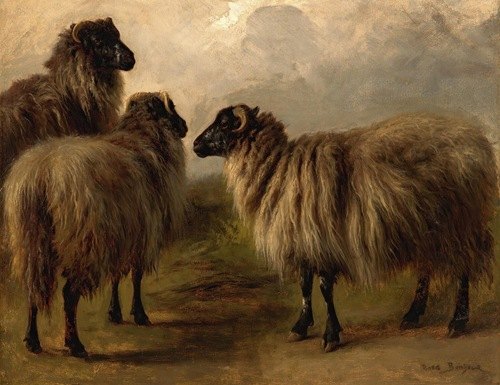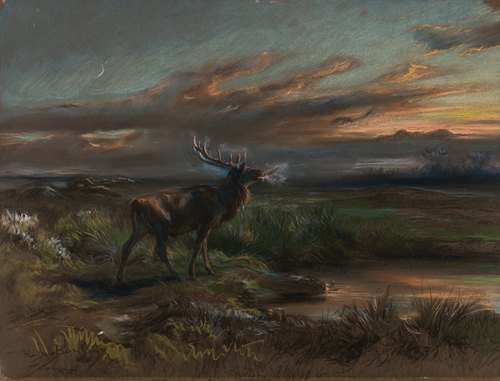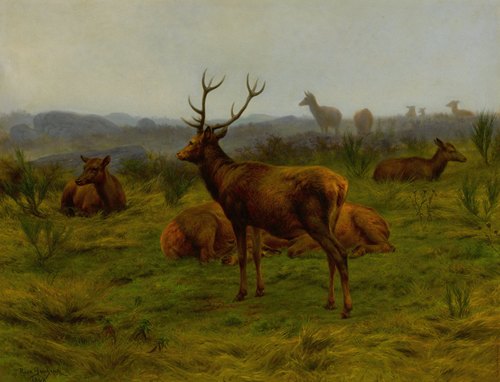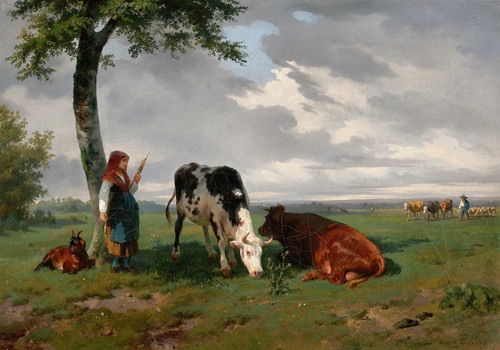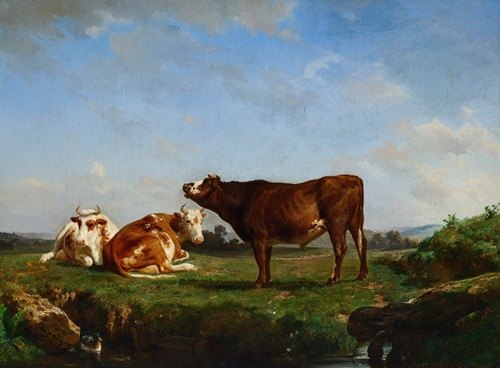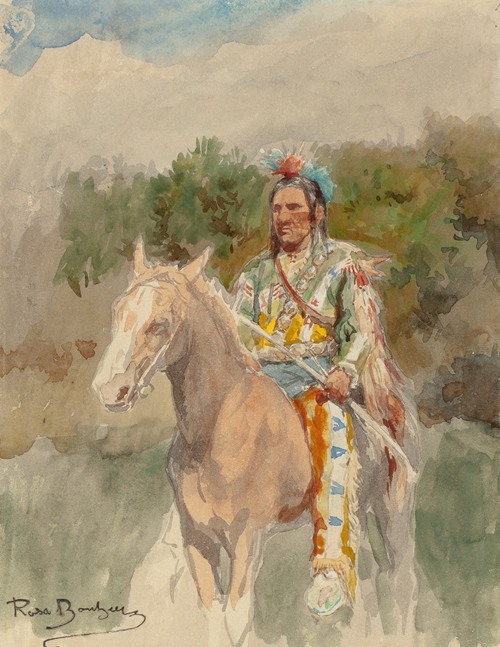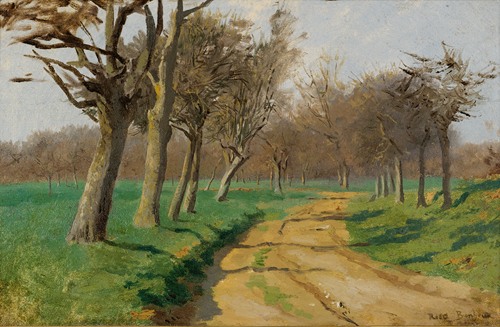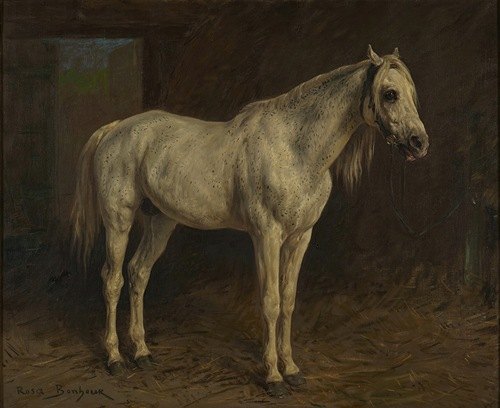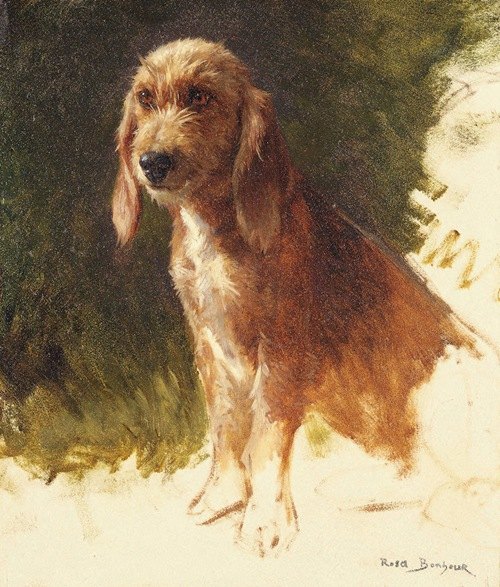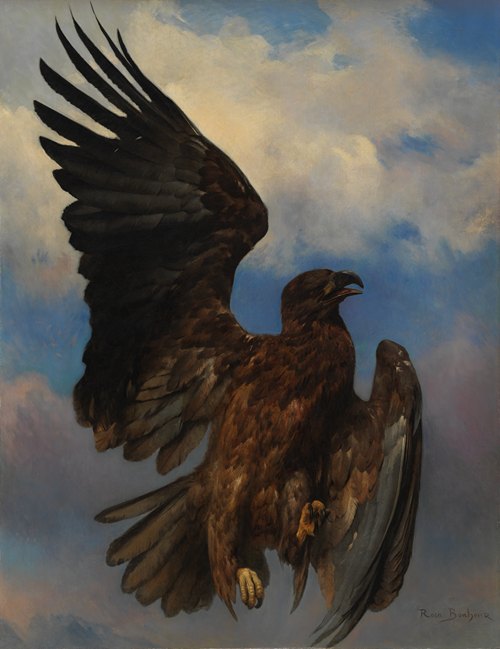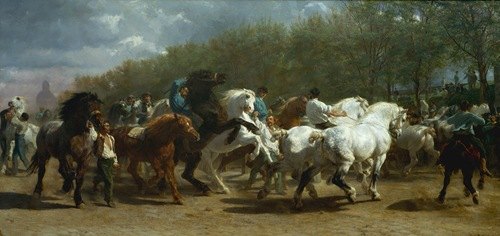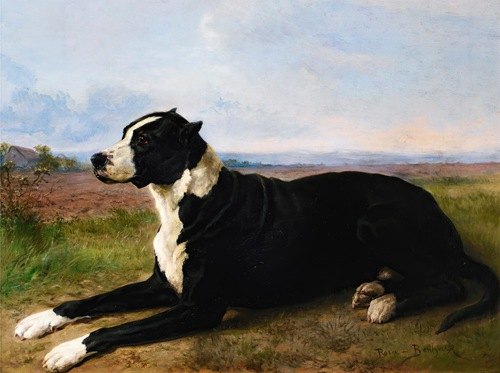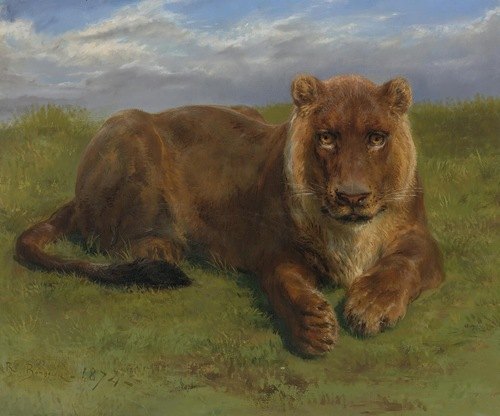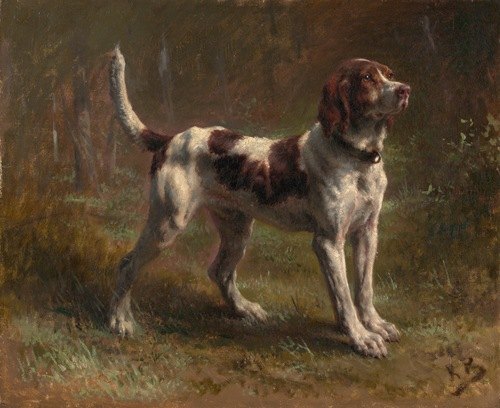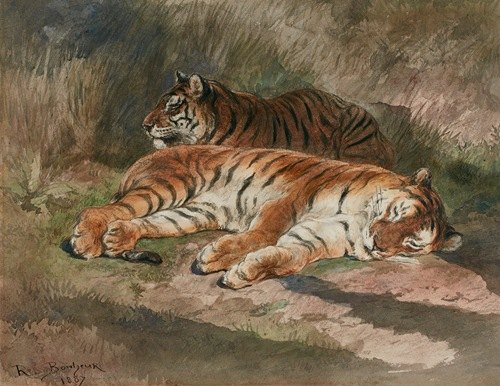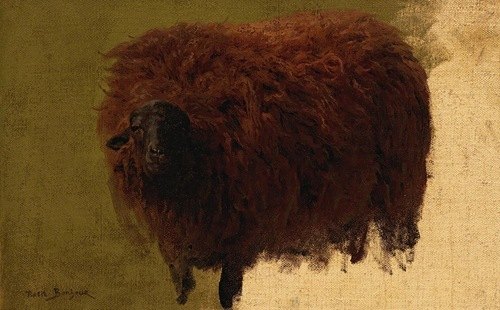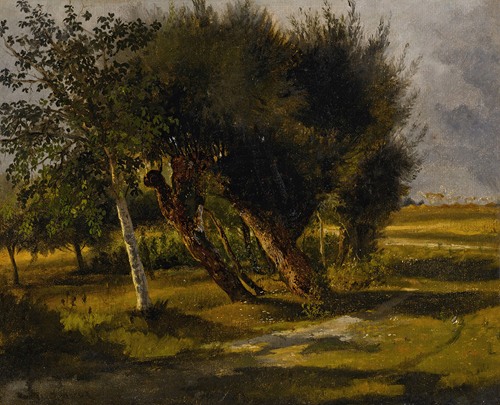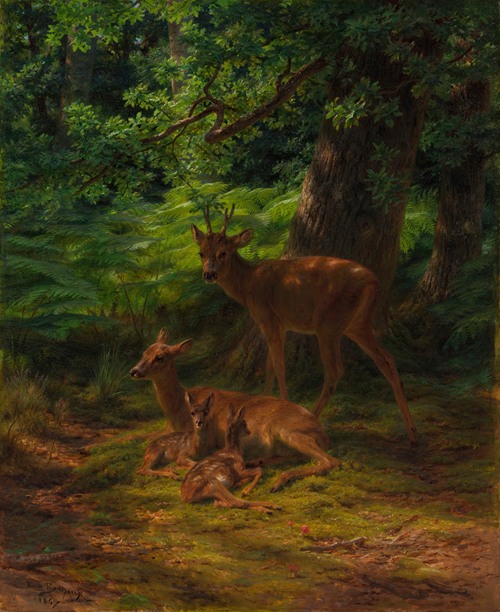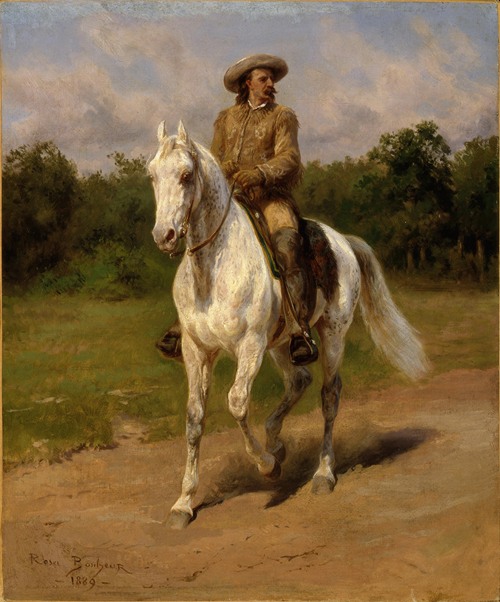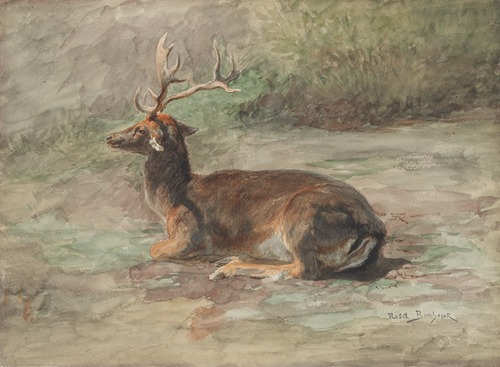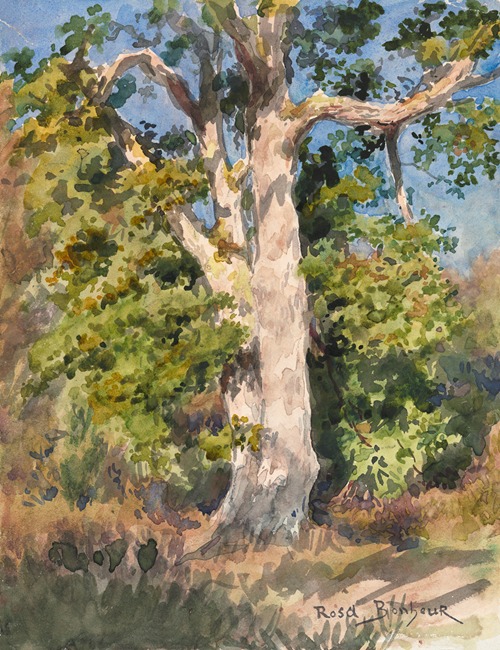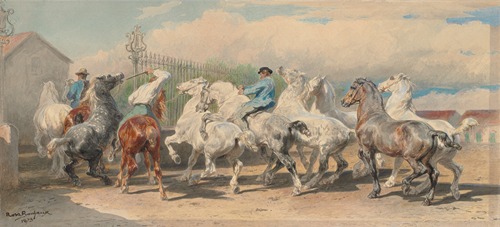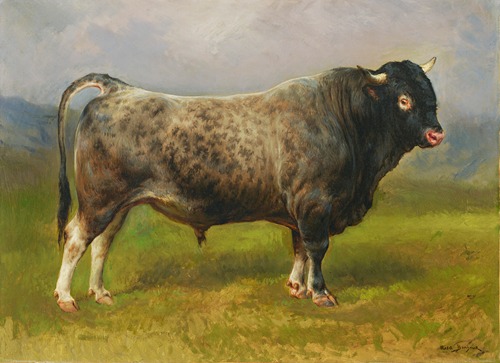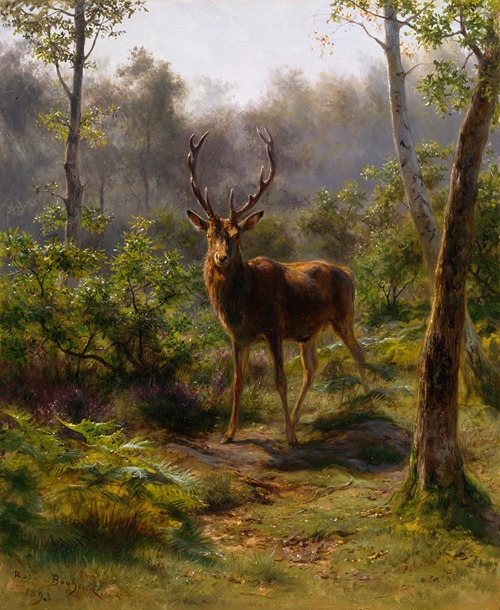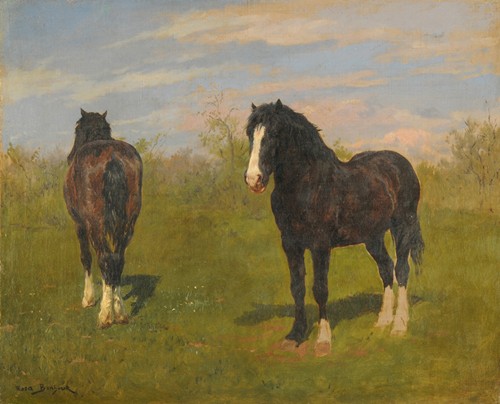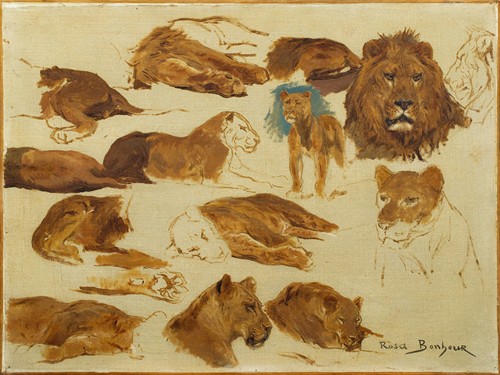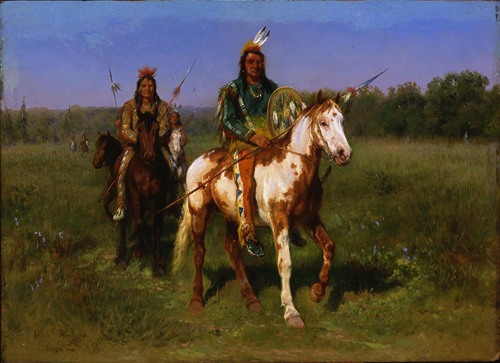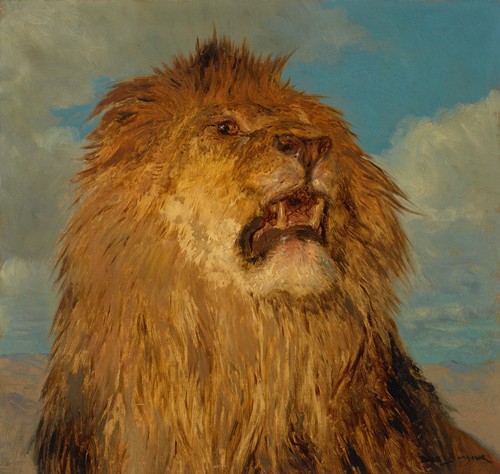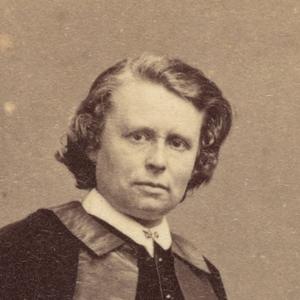

Rosa Bonheur
Rosa Bonheur, born Marie-Rosalie Bonheur, was a French artist, mostly a painter of animals (animalière) but also a sculptor, in a realist style. Her paintings include Ploughing in the Nivernais, first exhibited at the Paris Salon of 1848, and now at the Musée d'Orsay in Paris, and The Horse Fair (in French: Le marché aux chevaux), which was exhibited at the Salon of 1853 (finished in 1855) and is now in the Metropolitan Museum of Art, in New York City. Bonheur was widely considered to be the most famous female painter of the nineteenth century.
Bonheur was born on 16 March 1822 in Bordeaux, Gironde, the oldest child in a family of artists. Her mother was Sophie Bonheur (born Marquis), a piano teacher; she died when Rosa was eleven. Her father was Oscar-Raymond Bonheur, a landscape and portrait painter who encouraged his daughter's artistic talents. Though of Jewish origin, the Bonheur family adhered to Saint-Simonianism, a Christian-socialist sect that promoted the education of women alongside men. Bonheur's siblings included the animal painters Auguste Bonheur and Juliette Bonheur, as well as the animal sculptor Isidore Jules Bonheur. Francis Galton used the Bonheurs as an example of "Hereditary Genius" in his 1869 essay of the same title.
Bonheur moved to Paris in 1828 at the age of six with her mother and siblings, after her father had gone ahead of them to establish a residence and income there. By family accounts, she had been an unruly child and had a difficult time learning to read, though she would sketch for hours at a time with pencil and paper before she learned to talk. Her mother taught her to read and write by asking her to choose and draw a different animal for each letter of the alphabet. The artist credited her love of drawing animals to these reading lessons with her mother.
At school she was often disruptive, and was expelled numerous times. After a failed apprenticeship with a seamstress at the age of twelve, her father undertook her training as a painter. Her father allowed her to pursue her interest in painting animals by bringing live animals to the family's studio for studying.
Following the traditional art school curriculum of the period, Bonheur began her training by copying images from drawing books and by sketching plaster models. As her training progressed, she made studies of domesticated animals, including horses, sheep, cows, goats, rabbits and other animals in the pastures around the perimeter of Paris, the open fields of Villiers near Levallois-Perret, and the still-wild Bois de Boulogne. At fourteen, she began to copy paintings at the Louvre. Among her favorite painters were Nicolas Poussin and Peter Paul Rubens, but she also copied the paintings of Paulus Potter, Frans Pourbus the Younger, Louis Léopold Robert, Salvatore Rosa and Karel Dujardin.
She studied animal anatomy and osteology in the abattoirs of Paris and dissected animals at the École nationale vétérinaire d'Alfort, the National Veterinary Institute in Paris. There she prepared detailed studies that she later used as references for her paintings and sculptures. During this period, she befriended the father-and-son comparative anatomists and zoologists, Étienne Geoffroy Saint-Hilaire and Isidore Geoffroy Saint-Hilaire.
Rosa was also an open lesbian "first living with partner Nathalie Micas for over 40 years and then, after Micas' death, forging a relationship with American painter Anna Elizabeth Klumpke. By living her life openly in an era when lesbianism was disparaged by the government, Bonheur staked her claim as a groundbreaking individual both in her career and her personal life".
A French government commission led to Bonheur's first great success, Ploughing in the Nivernais, exhibited in 1849 and now in the Musée d'Orsay in Paris. Her most famous work, the monumental The Horse Fair, was completed in 1855 and measured eight feet high by sixteen feet wide. It depicts the horse market held in Paris, on the tree-lined boulevard de l'Hôpital, near the Pitié-Salpêtrière Hospital, which is visible in the painting's background. There is a reduced version in the National Gallery in London. This work led to international fame and recognition; that same year she traveled to Scotland and met Queen Victoria en route, who admired Bonheur's work. In Scotland, she completed sketches for later works including Highland Shepherd, completed in 1859, and A Scottish Raid, completed in 1860. These pieces depicted a way of life in the Scottish highlands that had disappeared a century earlier, and they had enormous appeal to Victorian sensibilities.
Bonheur exhibited her work at the Palace of Fine Arts and The Woman's Building at the 1893 World's Columbian Exposition in Chicago, Illinois.
Though she was more popular in England than in her native France, she was decorated with the French Legion of Honour by the Empress Eugénie in 1865, and was promoted to Officer of the order in 1894. She was the first female artist to be given this award.
Bonheur was represented by the art dealer Ernest Gambart (1814–1902). In 1855 he brought Bonheur to the United Kingdom, and he purchased the reproduction rights to her work. Many engravings of Bonheur's work were created from reproductions by Charles George Lewis (1808–1880), one of the finest engravers of the day.
In 1859 her success enabled her to move to the Château de By near Fontainebleau, not far from Paris, where she lived for the rest of her life. The house is now a museum dedicated to her.
Women were often only reluctantly educated as artists in Bonheur's day, and by becoming such a successful artist she helped to open doors to the women artists that followed her.
Bonheur can be viewed as a "New Woman" of the 19th century; she was known for wearing men's clothing, but she attributed her choice of trousers to their practicality for working with animals (see Rational dress). In her romantic life, she was fairly openly a lesbian; she lived with her first partner, Nathalie Micas, for over 40 years until Micas' death, and later began a relationship with the American painter Anna Elizabeth Klumpke. At a time when lesbian sex – particularly tribadism – was regarded as animalistic and deranged by most French officials, Bonheur's outspokenness about her personal life was groundbreaking.
In a world where gender expression was policed, Rosa Bonheur broke boundaries by deciding to wear pants, shirts and ties. She did not do this because she wanted to be a man, though she occasionally referred to herself as a grandson or brother when talking about her family; rather, Bonheur identified with the power and freedom reserved for men. Wearing men's clothing gave Bonheur a sense of identity in that it allowed her to openly show that she refused to conform to societies' construction of the gender binary. It also broadcast her sexuality at a time where the lesbian stereotype consisted of women who cut their hair short, wore pants, and chain-smoked. Rosa Bonheur did all three. Bonheur never explicitly said she was a lesbian, but her lifestyle and the way she talked about her female partners suggests this.
Until 2013 women in France were forbidden from wearing trousers by the “Decree concerning the cross-dressing of women” which was implemented on 17 November 1800. Bonheur in 1852 had to ask permission from the police to wear trousers, as this was her preferred attire to go to the sheep and cattle markets to study the animals she painted.
Bonheur, while taking pleasure in activities usually reserved for men (such as hunting and smoking), viewed her womanhood as something far superior to anything a man could offer or experience. She viewed men as stupid and mentioned that the only males she had time or attention for were the bulls she painted.
Having chosen to never become an adjunct or appendage to a man in terms of painting, she decided she would be her own boss and that she would lean on herself and her female partners instead. She had her partners focus on the home life while she took on the role of breadwinner by focusing on her painting. Bonheur's legacy paved the way for other lesbian artists who didn't favour the life society had laid out for them.
Bonheur died on 25 May 1899, at the age of 77, at Thomery (By), France. She was buried together with Nathalie Micas (1824 – 24 June 1889), her lifelong companion, at Père Lachaise Cemetery, Paris. Klumpke was Bonheur's sole heir after her death, and later joined Micas and Bonheur in the same cemetery upon her death. Many of her paintings, which had not previously been shown publicly, were sold at auction in Paris in 1900.
